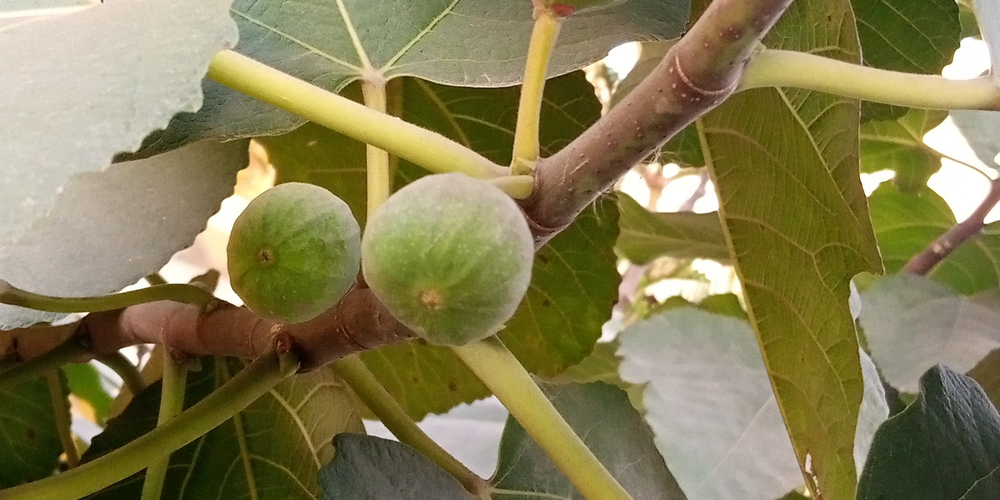Most cold hardy fig trees grow in USDA zone 7 yet die back to the ground. But the good news is that they also come back up from the roots every time.
Of course, some varieties may not adapt well to some areas because of a short production window or adverse weather conditions. So, you have to be careful about the cultivars that you pick.
What is the most cold hardy fig tree? The Hardy Chicago is the most cold hardy cultivar of the common fig type. Hardy to zone 5, it can survive harsh winters as long as it has protection from icy winds.
The Desert King is the most cold hardy variety of San Pedro types, while Lebi is the hardiest of the Smyrna type.
It should be noted that both the Desert King and Lebi need fig wasps for pollination. So, you can only grow them up in zone 7 because the wasp cannot tolerate harsher climates.
The Best Cold Hardy Fig Trees For Backyard Growers
1 – Little Miss Figgy
This dwarf variety is a mutation of an LSU Purple fig. Notably, it grows crazy fast but needs to overwinter indoors for satisfying fruit production. Or better yet, in a greenhouse.
If you do not grow the Little Miss Figgy in a container, make sure to protect its base with grass clippings all year round. The mulch will keep the plant cool in the summer and warmer in the winter. But do not expect the fig shrub to produce figs because it may not have enough time.
Pick this variety if you have clay soils or want an ornamental fig plant. It only needs a little pruning in late winter and slow-release fertilizer in early spring.
2 – Negra D’Agde
Here is another French variety of cold hardy fig trees. This variety does well in rainy climates and still manages to be ready for harvest during mid-summer in most NorthEast areas and the Midwest.
The fig pulp looks cherry red and tastes like those delicious drupes too. Sometimes, the fruits might taste more like brown sugar with a slight hint of raspberry—mainly because of high humidity levels. But in any case, they are delicious and quickly go down one after the other once harvested.
3 – Olympian
Some cold hardy fig trees only tolerate short winters. Hardy to zone 6, the Olympian fig tree is the second most cold hardy fig. Generally, you can expect it to bear fruit in August in most northern areas.
The Olympian appeared in the U.S. National Plant Germplasm System first in 2012. In-ground Olympian fig trees tend to do better than potted. Why? Because they root bound fast and become too heavy to move around.
Its unique flavor profile is what made this cultivar pretty famous. In detail, its figs taste like peaches dipped in honey.
4 – Texas Everbearing Fig
Also known as Brown Turkey, the Texas Everbearing fig grows well in USDA zone 7. It can grow very tall, so cutting it in half is often recommendable to make it ripen faster before winter hits. Otherwise, it may not have time to ripen the fruit. In zone 7, it looks more like a fig bush than a tree too.
Usually, this cultivar completely defoliates in December. And the wood lives for a little while until the temperatures drop into the teens. When this happens, you can cut it down to the roots—about an inch from the ground—and cover it with mulch or grass clippings.
The mulch will protect the root system and allow for more vigorous growth in the upcoming growing season.
5 – Violette De Bordeaux
As its name suggests, this variety comes from France. The Violette de Bordeaux fig tree is one of the most delicious cold hardy fig trees. In detail, its juicy pulp tastes like raspberry jam.
This cultivar produces small figs, but the fruits pack a distinctive sweet flavor. They have purple to black colored skin and a deep red pulp. And, of course, they attract all the birds in the neighborhood. So using organza bags is highly recommendable.
Because of its compact growth habit, it mostly grows vertically. Do not be afraid to prune it to encourage lateral growth. Usually, it matures in the fall—sometimes, in late October.
Related Article: Fig Tree with Yellow Leaves Falling Off

